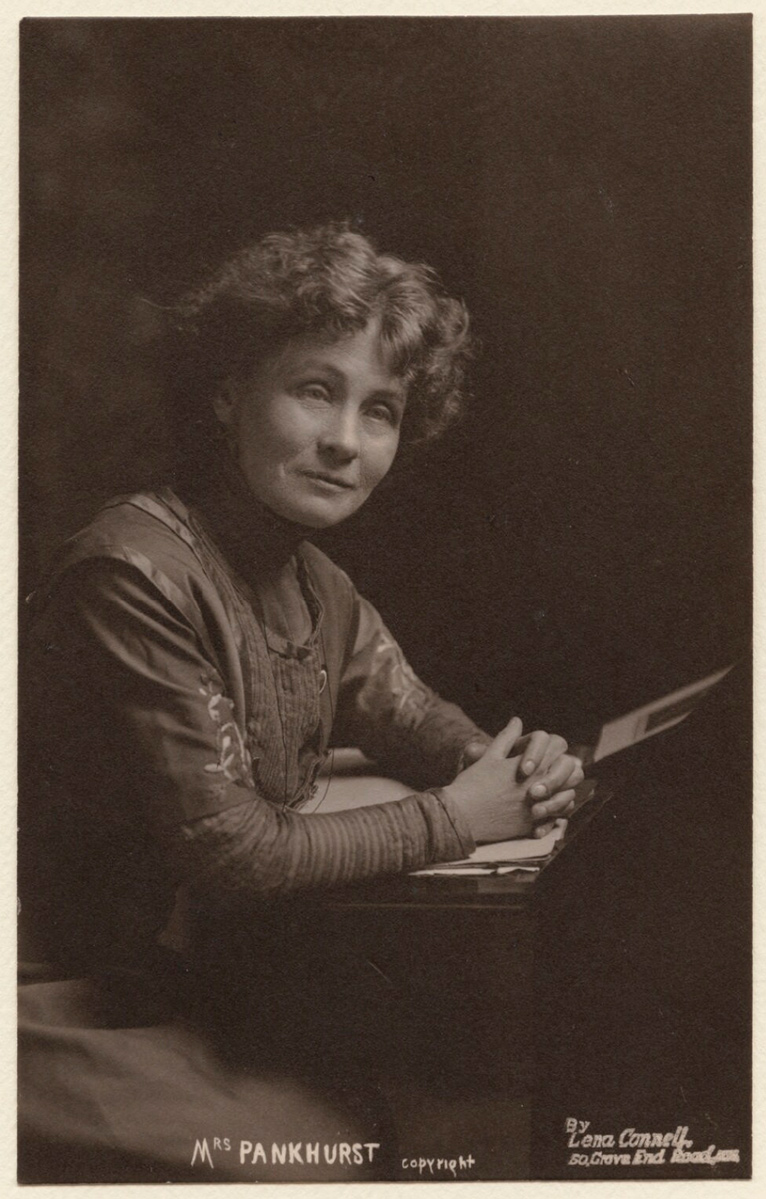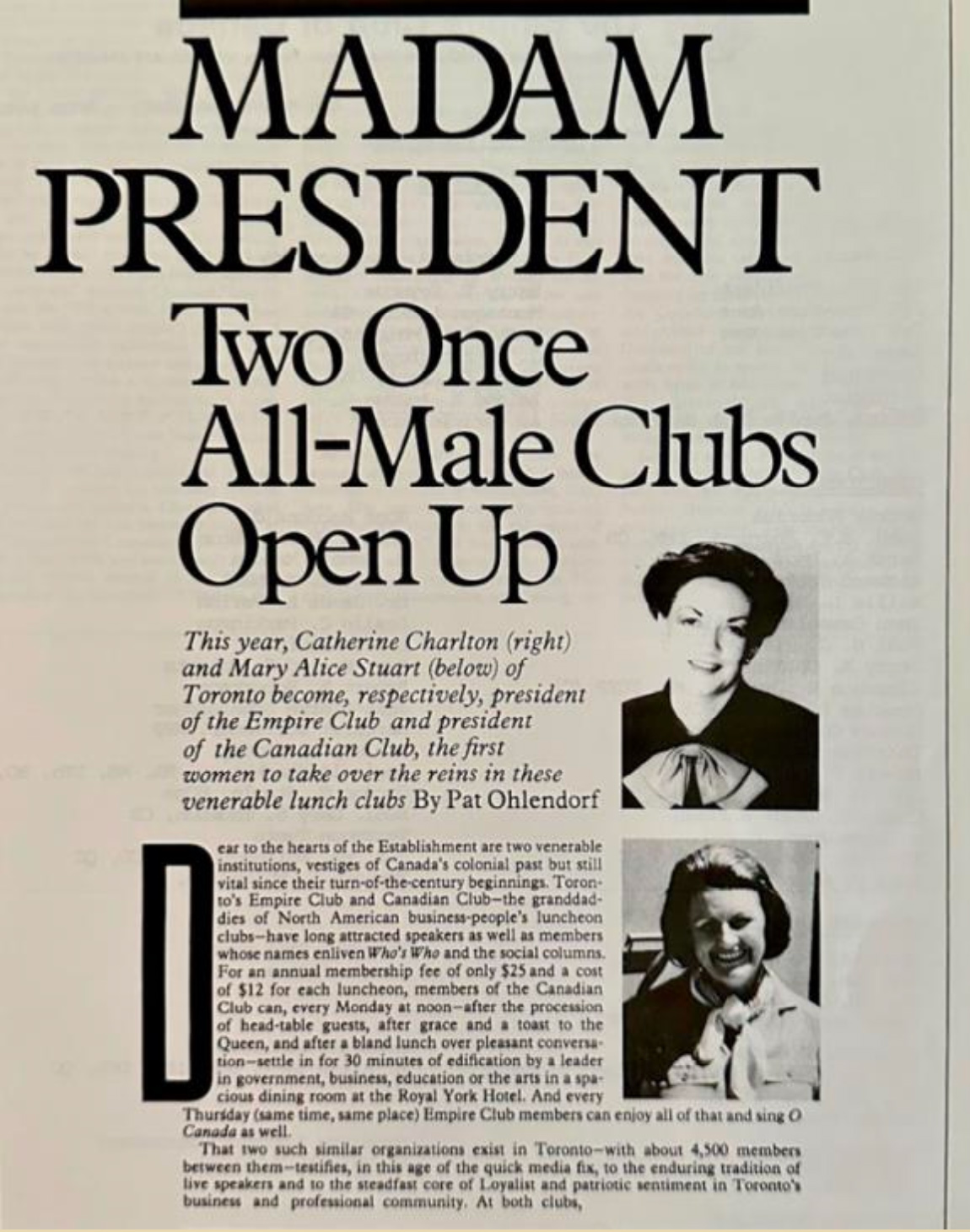Fortunately, the Empire Club kept pace with and sometimes outpaced the changesintroduced over the years into Canadian society, and this was never truer than the roleof women at the Club. It was inevitable as early as the First World War that womenneeded a larger voice, and they had “proven” their worth as partners as early as 1918helping the War effort in countless ways both at home and even on the front lines asnurses and medical aids. At the end of the War, the Club invited the very famous leaderof the Women’s Party of Great Britain, Ms. Emmeline Pankhurst, to make a case for alarger role for women in society. It was a gentle argument by today’s standards butmade a lot of men sit up and listen. Here is an extract from that memorable speech:
“A few years ago, when women were fighting for theirenfranchisement, one of the arguments against them wasthat women should not have power of citizenship becausethey could not understand Imperial questions, and theircoming into citizenship would be very dangerous for theintegrity of the Empire. Is it not strange that, now that thatquestion is settled, I should be here today as the guest of anEmpire Club? Whether women are competent to deal withthe vital questions of Empire as citizens, remains to be seen;we are still young in citizenship; but the women of theEmpire have shown that whether their brains can deal withthose complicated questions or not, their hearts and theirhands have been ready to take up the burden of Empire andto sustain it equally with the men. “
Although women sometimes spoke at the Empire Club of Canada, it took another 54years for the Empire Club of Canada and the other Bay Street Clubs to allow womeninto their ranks. And it was not a big event marked with fanfare, but rather a slowprocess. The Empire Club of Canada had a membership-based system, capped at 500people, and, back then, for new members to be considered someone had to resign. Asa result, women appeared gradually at the Club, going on waiting lists to becomemembers along with their male counterparts. It was in 1972, under the presidency of HalJackman, that the very first women appeared in the weekly events at the Royal YorkHotel. It is believed that Madam Justice Marie Corbett, originally from Newfoundland,became the first female member of the Club after she moved to Toronto to become ajustice on the Ontario Court.
Little is written about the introduction of women at the Club, possibly due to the slow butsteady rate of growth of women members related to the membership-based systemreferenced above. Margaret Atwood made a rather comical reference to this newcategory of member when she addressed the Club in 1973 while Joseph H. Potts wasPresident of the Club…
“(…) Mr. Potts proudly informed me that The Empire Club had just let women in lastyear. And this reminded me of when I used to be a student at Harvard. There was akind of somber hall where they all used to eat dinner and before they let women in thereif a woman ever showed her nose during the luncheon proceeding, they would all throwbuns at her. So, I thought you know that there might be a danger that some of thesebun-throwing tendencies had lingered on at The Empire Club. But then I thought aboutthat, and I thought well if they’re going to throw anything I would rather that it be bunsrather than plates or forks.”
Eleven years later, Catherine Charletonbecame the first female President of theEmpire Club of Canada in 1984-1985, andsince then there have been severalremarkable women who have taken the reignsand helped to grow the Empire Club into thediverse and inclusive institution it is today.Because of this ongoing and continuousevolution, the Empire Club is stronger todaythan it has ever been in its history. Its Boardof Directors, its speakers and its audiencesreflect the reality of Toronto and Canada asone of the most open, tolerant, diverse, andinclusive societies in the world.
We should not forget that the move towardopenness began with introducing women tothe Club, and it was the first chapter in the modern history of our organization.It began a series of events and trends that moved the Club, and indeed the country,away from the male-dominated, British-centric origins of yesteryear into the extremelydiverse and inclusive organization that mirrors the City and the Country that gave birthto Canada’s most historic speaker’s podium.


